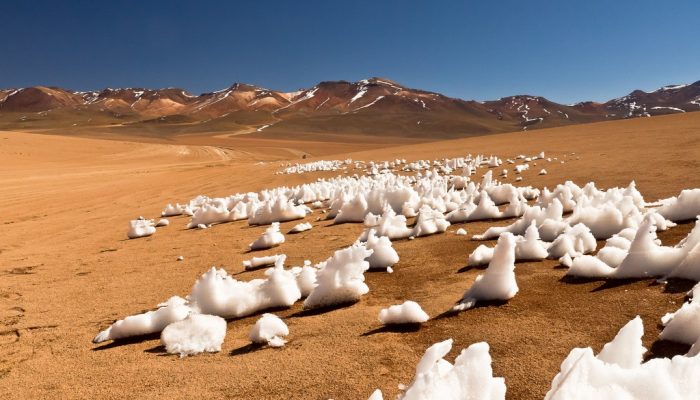The Antarctic ice sheet stores a large amount of water that could potentially add to sea level rise in a warming world (see this post and this post). It is currently losing ice, and the ice loss has been accelerating in the past decades. All this is linked to the melting of ice – not at the surface but at the base, underneath the so-called ice shelves which form the continuation of the Antarctic i ...[Read More]
If you didn't find what you was looking for try searching again.
Cryospheric Sciences
Image of the Week – Breaking the ice: river ice as a marker of climate change
Common images associated with climate change include sad baby polar bears, a small Arctic sea ice extent, retreating glaciers, and increasing severe weather. Though slightly less well-known, river ice is a hydrological system which is directly influenced by air temperature and the amount and type of precipitation, both of which are changing under a warming climate. Ice impacts approximately 60 % o ...[Read More]
Cryospheric Sciences
Image of the Week – Alien-iced
What do Chile and Jupiter’s moon Europa have in common? If you like astronomy, you may reply “space missions!” – Chile’s dry air and clear skies make it an ideal location for telescopes like the VLT or ALMA, while Europa’s inferred subsurface ocean will be studied by the upcoming mission to Jupiter JUICE, due to launch in 2022. But Chile’s high altitude Atacama desert and Europa’s frozen surface a ...[Read More]
Cryospheric Sciences
Do clouds affect melting over Antarctic ice shelves?
The Antarctic Peninsula is the ‘canary in the coalmine’ of Antarctic climate change. In the last half-century it has warmed faster than most other places on Earth, and considerable change has consequently been observed in the cryosphere, with several ice shelves collapsing in part or in full. Representing this change in models is difficult because we understand comparatively little abo ...[Read More]
Cryospheric Sciences
Image of the Week – The shape of (frozen sea) water
Polar sea ice exists as isolated units of ice that we describe as floes. These floes do not have a constant shape (see here for instance); they can vary from almost circular to being jagged and rectangular. However, sea ice models currently assume that all floes have the same shape. Much focus has been paid to the size of floes recently, but do we also need to reconsider how floe shape is t ...[Read More]
Cryospheric Sciences
Image of the Week – Stuck in the ice: could it have been predicted?
Expeditions in the Southern Ocean are invaluable opportunities to learn more about this fascinating but remote region of the world. However, sending vessels to navigate the hostile Antarctic waters is an expensive endeavor, not only financially but also from a human perspective. When vessels are forced to turn back due to hazardous conditions or, even worse, become stuck in the ice (as shown in ou ...[Read More]
Cryospheric Sciences
Image of the Week – The future of Antarctic ice shelves
Climate change will increase ice shelf melting around Antarctica. That’s the not-very-surprising conclusion of a recent modelling study, resulting from a collaboration between Australian and German researchers. Here’s the less intuitive result: much of the projected melting is actually linked to a decrease in sea ice formation. Learn why in our Image of the Week… Different types ...[Read More]
Cryospheric Sciences
Image of the Week — Quantifying Antarctica’s ice loss
It is this time of the year, where any news outlet is full of tips on how to lose weight rapidly to become beach-body ready. According to the media avalanche following the publication of the ice sheet mass balance inter-comparison exercise (IMBIE) team’s Nature paper, Antarctica is the biggest loser out there. In this Image of the Week, we explain how the international team managed to weight Anta ...[Read More]
Cryospheric Sciences
Image of the Week – Why is ice colourful?
When you think of glacier ice, what colour first springs to mind? Maybe white, blue or transparent? Well, glacier ice can, in fact, be mesmerising and multi-coloured! Our image of the week shows thin sections of glacier ice under polarised light. These sections were cut from block samples of two Alpine glaciers in Switzerland (Chli Titlis and Grenzgletscher). In these images the individual ice c ...[Read More]
Cryospheric Sciences
Image of the Week – Super-cool colours of icebergs
It is Easter weekend! And as we do not want you to forget about our beloved cryosphere, we provide you with a picture nearly as colourful as the Easter eggs: very blue icebergs! What makes them so special? This is what this Image of the Week is about… What are icebergs made of? Icebergs are chunks of ice which break off from land ice, such as glaciers or ice sheets (as you’ll know if you rem ...[Read More]










